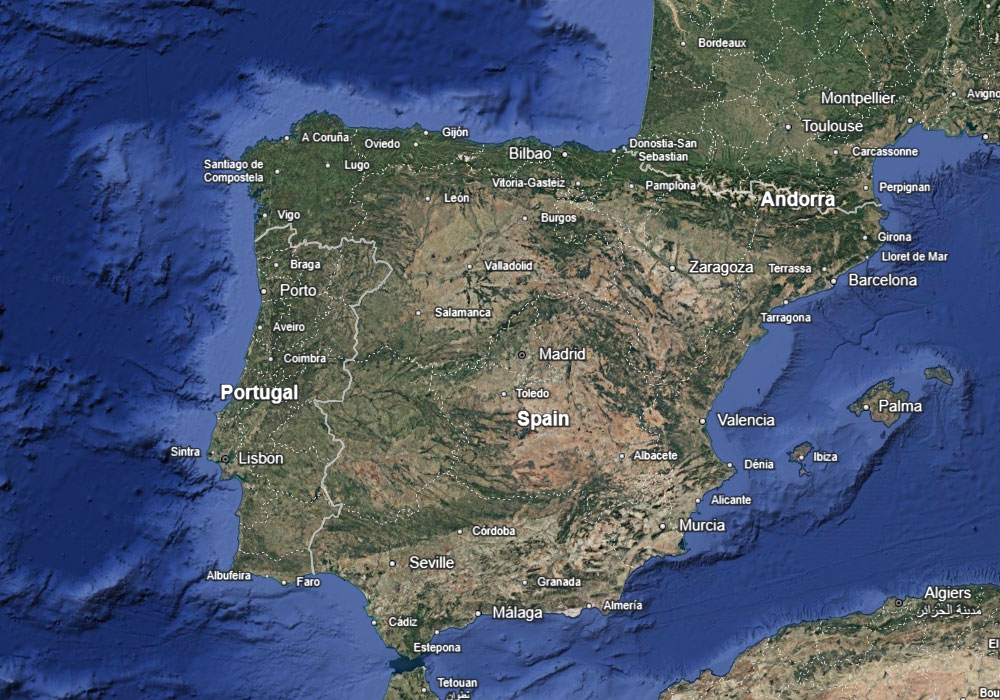Global Perspectives
Why Urban Segregation is More Complicated Than We Think

This Global Perspectives blog series draws from a curated collection of over 75 influential urban planning journals published worldwide, meticulously compiled to foster global communication and enrich collaborative planning discourse. By highlighting groundbreaking research, innovative methodologies, and case studies from diverse contexts — spanning each continent — these posts aim to facilitate knowledge transfer, explore cutting-edge developments, and share contextually relevant solutions that address shared urban challenges and shape the future of planning practice.
Urban segregation is often associated with large metropolises, where economic disparities and diverse populations contribute to spatial divides. Medium-sized cities, typically defined as those with populations exceeding 100,000, are frequently idealized as more egalitarian, offering balanced income distribution and affordable housing.
However, this perception is being challenged by emerging research, particularly from Spain, which suggests that segregation levels in these cities can rival those of larger urban centers.
In "Together but Separated: Residential Segregation in Spanish Medium-Sized Cities," Carme Bellet Sanfeliu, José Lasala Fortea, Gonzalo Andrés López, and Francisco Cebrián Abellán analyzed 34 medium-sized Spanish cities, employing three key metrics:
- Index of Segregation (IS): Measures how evenly income groups are distributed across neighborhoods.
- Exposure Index (xPx): Indicates the likelihood of individuals from the same income group encountering one another.
- Concentration Index (Delta): Identifies whether specific groups are spatially concentrated.
The Paradox of Medium-Sized Cities
The findings revealed a surprising paradox: cities such as Badajoz (IS = 0.41) and Cáceres (IS = 0.36) exhibited segregation levels comparable to, or even higher than, those of Madrid (IS = 0.38) and Barcelona (IS = 0.30).
This challenges the traditional assumption that smaller cities foster greater social cohesion due to their walkable, human-scale communities.

Spain (Google Earth Image © 2025)
Instead, the research suggests that economic structures, housing markets, historical development patterns, and regional characteristics play a more decisive role in shaping residential segregation than the simple mathematics of urban scale.
For instance, the economic history and housing tenure patterns of Badajoz contribute to spatial divides that mirror those found in larger metropolitan areas. This finding is significant for planners worldwide, as it indicates that medium-sized cities cannot be assumed to be inherently more equitable.
In "Residential Segregation in Medium-Sized Spanish cities," Carme Bellet Sanfeliu, Gonzalo Andrés López, and Francisco Cebrián Abellán highlights the importance of a nuanced understanding of local contexts, which can vary significantly from Bristol to Bogotá.
Rethinking Urban Segregation: Insights from Sako Musterd
In "Urban Segregation: Theoretical Perspectives and Policy Views," Sako Musterd offers a broader framework for understanding the impacts of segregation. Musterd emphasizes that institutional contexts (such as welfare systems), structural factors (including globalization), and individual preferences all contribute to residential segregation across cities.
A key insight is that not all forms of residential segregation are inherently negative. Musterd's research suggests that when households maintain non-discriminatory attitudes, and when inequality and segregation do not reach extreme levels, some micro-level homogeneity can be beneficial.
This homogeneity may help individuals establish stronger social networks, bring together people with shared interests, and facilitate easier communication when social and cultural distances are relatively small. This perspective is detailed in the "Handbook of Urban Segregation".
However, Musterd also identifies a threshold effect: when poverty concentrations in neighborhoods exceed 40 percent, they begin to produce negative impacts on individual earnings.
This threshold was measured in the Swedish context, where poverty was defined as the share of people in the lowest 30 percent income bracket, and effects were assessed by examining the relationship between poverty concentration and individual earnings.
Notably, poverty levels below this 40 percent threshold showed only limited negative effects on earnings, but once this critical point was surpassed, the negative impacts became statistically significant.
This difference is largely attributed to Europe's stronger welfare systems, which include individual rent subsidies, old-age pensions, unemployment benefits, disability benefits, and income allowances for long-term illness. As a result, unemployed residents in European cities retain access to health care and other essential services, preventing the formation of areas of extreme poverty concentration.
In contrast, American cities, with weaker social safety nets and a history of institutionalized racial inequality, often experience more severe segregation, as noted in Musterd's analysis.
Implications for Planners: A Global Perspective
The findings from these studies carry significant implications for urban planners worldwide, particularly in efforts to address segregation across diverse urban contexts. Below is a table summarizing the key takeaways and their relevance as identified by the author ZhangHong Ju:
| Takeaway | Description | Global Relevance |
|---|---|---|
| Housing Tenure and Mixed Developments | Promoting mixed-tenure (ownership vs. rental) developments to prevent concentration of rental housing. | Applicable in cities like London, New York, and Mumbai to reduce spatial divides. |
| Preventing Extreme Poverty Concentrations | Focus on areas where poverty exceeds 40 percent to mitigate negative economic impacts. | Critical for cities with weak welfare systems, such as in the U.S. and parts of Asia. |
| Context-Specific Policies | Tailor policies to local economic history, housing markets, and institutional arrangements. | Essential for medium-sized cities globally, from Spain to South Africa, recognizing local nuances. |
In the United States, segregation has long been a central issue in urban planning, from Black community planning to addressing gentrification trends. Planners have sought appropriate and effective policies to confront challenges arising from liberal welfare regimes, weaker social safety nets, and a history of institutionalized racial inequality. The Spanish studies offer a valuable framework for these efforts, emphasizing the importance of place-specific interventions.
For example, promoting mixed-tenure developments can help mitigate segregation by ensuring diverse housing options and preventing the concentration of rental housing in specific areas.
Research indicates that neighborhood poverty becomes problematic when it exceeds a 40 percent concentration, a threshold often reached in highly segregated American cities but rarely observed in European contexts due to stronger welfare systems.
Cities that frequently approach this threshold should prioritize preventing such extreme concentrations rather than attempting to eliminate all forms of residential clustering.
Moreover, the experience of medium-sized Spanish cities suggests that policies aimed at reducing segregation must be place-specific.
Economic history, housing markets, topography, and institutional arrangements matter more than city size — even smaller cities can exhibit segregation levels comparable to those of major metropolitan areas.
This insight is especially relevant for planners in cities such as Bristol Urban, where local factors must guide planning strategies.
Embracing Complexity to Shape Balanced Cities
The paradox of neighborhood choice underscores that urban segregation is a multifaceted issue that cannot be reduced to simple binaries such as city size. By understanding the complex interplay of economic, social, and institutional factors, planners can develop more nuanced and effective strategies to promote inclusive and equitable cities.
As we continue to grapple with these challenges, it is important to remember that the path to a more just urban future lies in embracing the complexity of our cities and responding with creativity and compassion. Planners around the world are encouraged to integrate these insights into their work, tailoring solutions to local contexts and fostering dialogue on inclusive urban development.
Related Research
- "Together but Separate: Residential Segregation in Spanish Medium-Sized Cities" (Ciudades, No. 28, 2025) Carme Bellet Sanfeliu, José Lasala Fortea, Gonzalo Andrés López, and Francisco Cebrián Abellán.
- "Urban Segregation: Theoretical Perspectives and Policy Viewpoints," (Ciudades, No. 28, 2025) Sako Musterd.
Top image: iStock/Getty Images Plus/ ventdusud
ABOUT THE AUTHOR


